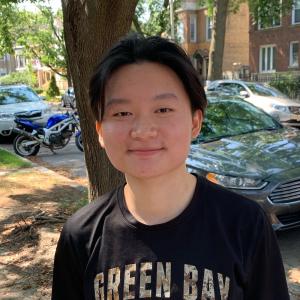Oberlin Blogs
8 questions for 8 Oberlin alums - part 3
March 1, 2009
Joe Dawson ’12
Similar Blog Entries
Jane Wickline
March 30, 2025
Several months before I arrived on campus as a first-year, Jane Wickline was graduating. It wasn’t until the beginning of my fourth year that I became aware of who she is or even knew that she attended Oberlin.

Cathy Park Hong and Real Life
March 29, 2025
There’s a lot to unpack in Hong’s narrative. What stands out to me, other than her being an Oberlin alum, is that she defines an experience that for me has been previously unspeakable.

Sarah Pirtle on the Vietnam War Protests
January 11, 2025
Part II: Sarah shares about student protests and their connections to current events.
